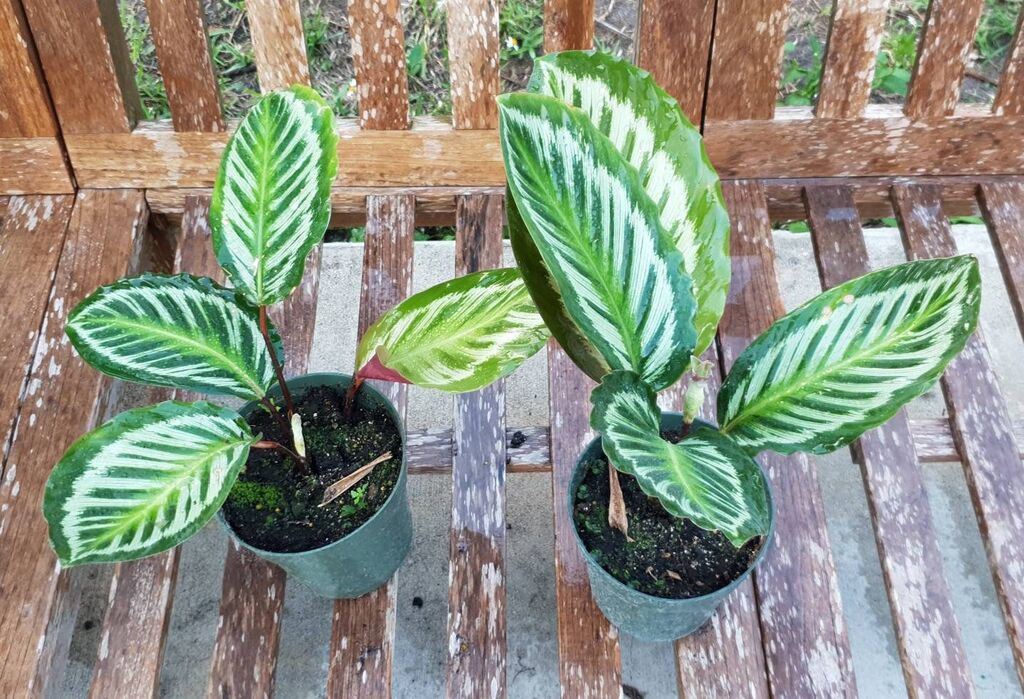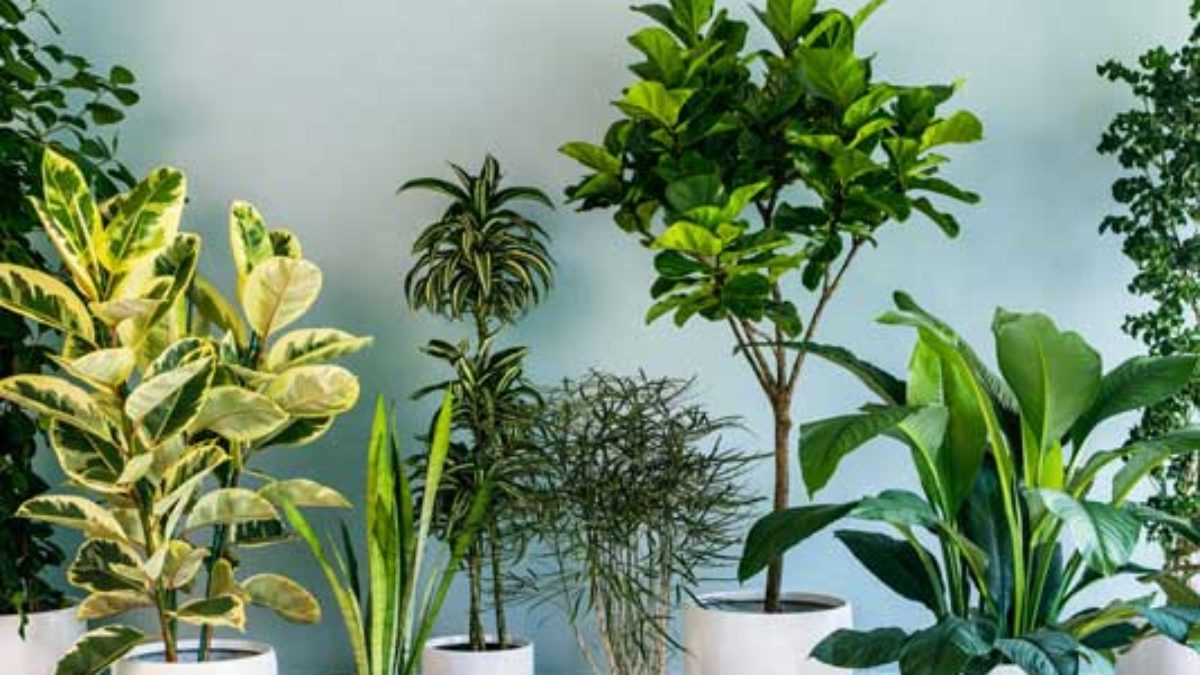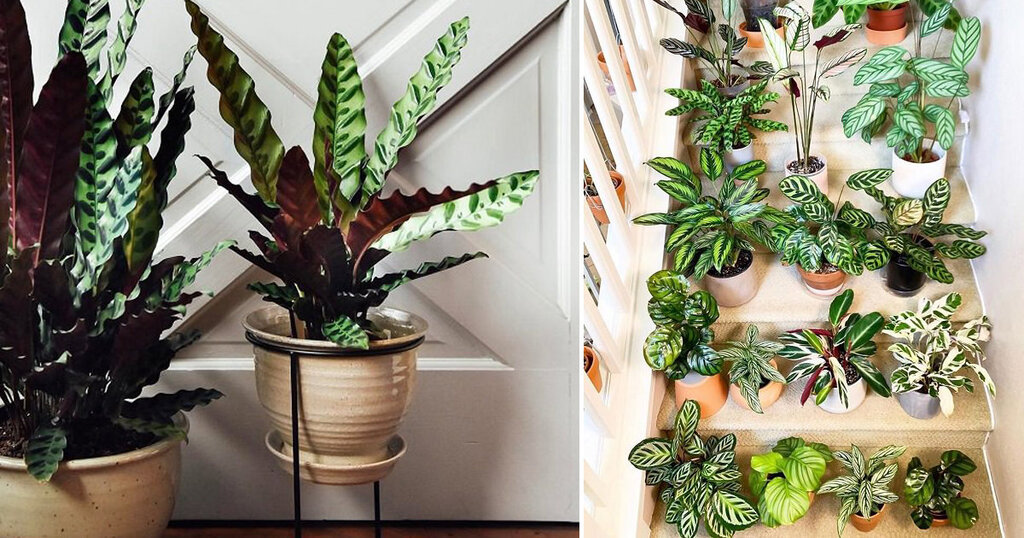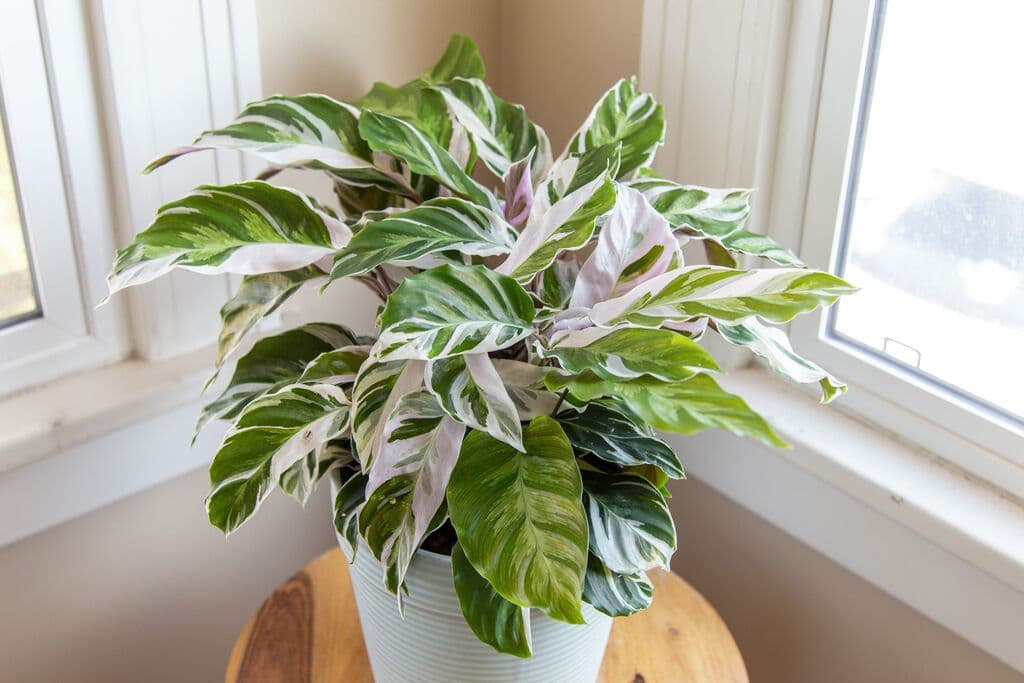Do you love to collect plants? Here’s another addition for you: Peacock Plant!
Also known as Goeppertia makoyana, peacock plant, and cathedral windows, this plant is a variety of Calathea plants. It is a popular houseplant that is known for its gorgeous foliage. Perfect for indoors as it can grow successfully in normal room conditions. This plant can be a great decor element and a creative way to incorporate nature into the space.
Just provide proper growing conditions and take care of them, and that’s all they need to grow into beautiful plants. Are you planning to buy this plant or just want to know more about this beautiful plant? If yes, keep reading.
Today in this blog, we will tell you everything about calathea peacock plants. From the right conditions to grow them to how to take care of them properly and when to report them, we’ve included everything. So let’s start with its species and varieties.
What is Calathea Peacock?

“The Goeppertia makoyana or Calathea makoyana is a species of plant belonging to the genus Goeppertia in the family Marantaceae, a species of flowering plants from tropical areas such as Africa.”
Known for their gorgeous wide, green, colorful leaves, these peacock plants can easily grow indoors. Just like the bird Peacock, these plants are also quite popular worldwide. As they are low-light plants, they’re good for indoor purposes. That’s why people love to use them in their homes and offices.
Many people, including gardeners and non-gardeners, are fascinated by this plant because of its watermelon-like leaf pattern and the contrasting maroon-purple. All these features make this plant really attractive.
Do you know that calathea peacock plants also won an award?Yes, native to Espírito Santo state of eastern Brazil, this popular houseplant has gained the Royal Horticultural Society’s Award of Garden Merit. Let’s know more about this unique-looking plant.
Here’s a brief table about all the things related to the peacock plant:
| Botanical Name: Calathea Makoyana |
| Common Name: Peacock Plant or Cathedral Windows |
| Plant Type: Evergreen, Herbaceous, Perennial |
| Family: Calathea |
| Native Area: Eastern Brazil |
| Mature Size: Up to 4 ft. tall |
| Sun Exposure: Partial Sun, Full Shade |
| Soil Type: Moist but well-drained |
| Soil pH: Acid, Neutral, Slightly Alkaline |
| Bloom Time: Anytime, but flowers are small |
| Flower Color: White |
| Hardiness Zones: 10 – 11, USA |
| Toxicity: Non-Toxic to dogs and cats |
After reading up here, you might have questions like is it easy to grow Calathea Makoyana or not? How often should you water a peacock plant? What accurate temperature and humid conditions are required to grow them properly?
Don’t worry; keep on reading as answers to all your questions have been answered in this post.
How to Grow a Calathea Peacock Plant?

So if you get fascinated by the appearance and properties of this plant, you might want to know more about calathea peacock care and its growing conditions. Unlike other plants. Calathea plant is quite easy to grow and take care of. However, they’re a little finicky but also manageable. All they need is bright but indirect sunlight.
They’re not one or two but plenty of varieties you can find in the calatheas plants. Here are some of the commonly used peacock plants:
- Calathea lancifolia (Rattlesnake Plant)
- Calathea Ornata (Pinstripe Calathea)
- Calathea Ornata Sanderiana
- Calathea Medallion
- Calathea Freddie
- Calathea Musaica
- Calathea Beauty Star
- Calathea Oppenheimiana
- Calathea Corona (Plant not the virus)
Want to know how you take care of a peacock plant? Read on for more peacock plant care secrets!
How to Care for your Peacock Plant

There are some right conditions and factors that you should keep in mind while growing a Calathea Makoyana indoors.
Light
Though Calathea is a tropical species, they still don’t like direct and intense sunlight. So it’s important to keep them away from any kind of direct sunlight as it can make the markings on the leaves fade. Also, don’t put them completely in a complete shade area. So what are the right light conditions for the peacock plant?
Experts recommend placing your plant in filtered light conditions. Though these plants can grow in full shaded areas, this can slow down growth significantly. So put them in a place where they can get a lot of bright and indirect light.
Soil
Select a soil that retains moisture but is still well-drained. Take a 2 part peat and 1 part perlite or sand to make this potting mix. To get a lush peacock plant with vibrant leaves, always use soil that is humusy and high in organic matter.
Water
Watering is an important part of plant care, though don’t overdo it! Here is the calathea peacock plant watering routine: water them well in the growing season but also provide good drainage. Whereas in the winter season, water your peacock plant less. Keep the balance so that your plant can grow fast and healthy!
Check the sign like if the leaves are starting to curl up, this can be a sign of underwatering. On the other hand, too much watering can cause root rot. To know their condition more accurately, you can use a moisture meter. This way, you can know exactly when your plant needs water.
Now, if you’re wondering what kind of water will be best for a peacock plant, distilled water or some captured from rainfall is usually considered best for plants. So if possible, use these two water options instead of tap water. Why not tap water? That’s because the leaves of this plant are highly sensitive to fluoride, which can result in the leaf tips turning brown. So it’s advised to use lukewarm water because it can shock the plant if the water is too cold.
Temperature
Calathea Makoyana is originally from Brazil; that’s why they usually prefer warm temperatures. However, they can be grown in normal household temperatures but still don’t let it below 65 degrees Fahrenheit (around 18 degrees Celsius).
According to experts, the ideal temperature for peacock plants is between 60 degrees F and 75 degrees F (15 and 24 degrees Celsius). Also, make sure that plant is not exposed to any kind of sudden and extreme changes in their environment. Keep it in a place where the temperature is constant so that your plant can grow healthy and happy!
Humidity
Just like other Calathea plants, these ones also prefer high humidity levels. So if you want to keep your little plant thriving, just provide the high humidity levels.
Here are some easy ways to provide humidity to peacock plants at your home or office:
- Put them in moist areas where they can get plenty of humility.
- You can also raise the humidity by misting the leaves.
- Put the plant pot on a tray of pebbles with some water inside.
- Or put a humidifier near your plant.
So what happens if the Calathea plant doesn’t get enough humidity? The most common problem you can immediately notice is their leaves will start developing brown spots and edges. Sometimes the leaves also start curling up.
Fertilizing or Feeding
Just like any other plant, you also have to provide fertilizer to your plant. Use a balanced liquid fertilizer or calathea makoyana fertilizer. Fertilize your peacock plant with a diluted liquid fertilizer once per two weeks and once a month during the growing season, which is the spring and summer (from April to October).
Stop feeding them once it’s the winter season, as these plants don’t grow in the colder season. fertilizing the peacock plant is quite easy; the only thing you need to keep in mind is always using a liquid or water-soluble fertilizer. Always read the instructions mentioned on the fertilizer and consider using less than the recommended dosage.
When Should You Report a Peacock Plant?


So when should you change the pot of the peacock plant?
All you need to check is: Do its roots come out of the drainage holes? Do the roots coil around the outside of the soil?
If your answer to both the questions is YES, it’s high time to change the existing pot of your peacock plant.
So put your plant in the new pot the next size up from the current one. Also, make sure that it has drainage holes and, if possible, report them during the growing season (spring and summer). If you don’t find the above symptoms, still repot them every two years. Don’t forget to propagate them; this is an important part of plant growth.
Common Problems with Calathea Peacock Plants


Fortunately, peacock plants are not known for any major issues and disease problems. Below are some of the most common problems:
- Browning Leaves/tips: this happens in the lack of humidity. Check whether only tips are brown; then it is probably because of the water. When the water contains too many minerals or chemicals, the leaves of the peacock plant start getting brown.
- Fungus Gnats: If your plant has small insects that look like fruit flies around your plants. They’re fungus gnats, mainly caused by the high soil humidity. However, they’re completely harmless but can be a nuisance. You can easily remove them by submerging the bottom part of the pot in water. After this, leave the first inch of soil dry. If the gnats are still there, then use diatomaceous earth mixed into the top part of the soil.
- Yellow Leaves: This is a generic symptom; however, this can be happening due to many things such as underwatering, overwatering, over-exposure to the sun, or over-or underfeeding.
- Leaves Rolling and Curling: This means that your plant is placed in low humidity levels or the water has high salts, fluorides, and chlorides.
Benefits of Calathea Peacock Plant


Are there any advantages of a peacock plant? Yes, not one but many. Apart from looking absolutely beautiful, this calathea peacock plant has many benefits. Below are some peacock plant benefits:
- This plant helps purify the air by removing the toxins present in the form of dust and hence provides fresh oxygen to the space.
- It provides a healthier environment for humans and also adds a pleasant factor to the indoor settings and surroundings.
- This is an excellent plant option for those people who have dry skin issues and respiratory issues.
- To add the moisture to any room, just place a calathea plant.
- These plants are kid and pet-friendly. Thus you can put them in the living room, bedroom, or anywhere in your house.
Happy Gardening!
The striking patterned leaves of the Calathea Peacock plant make them quite attractive. Easy to grow and maintain, this plant is an ideal option for those who are looking for some low-maintenance plants. Just provide them bright filtered light and right humidity, and your peacock plant will grow into a lovely and pretty foliage plant.
So, this is all about the calathea peacock plants. I hope this complete peacock plant care and growing guide has helped you to understand everything clearly and better. If you find this post informative and helpful, share it with your family and friends looking to add some indoor plants to homes.
Discover More

